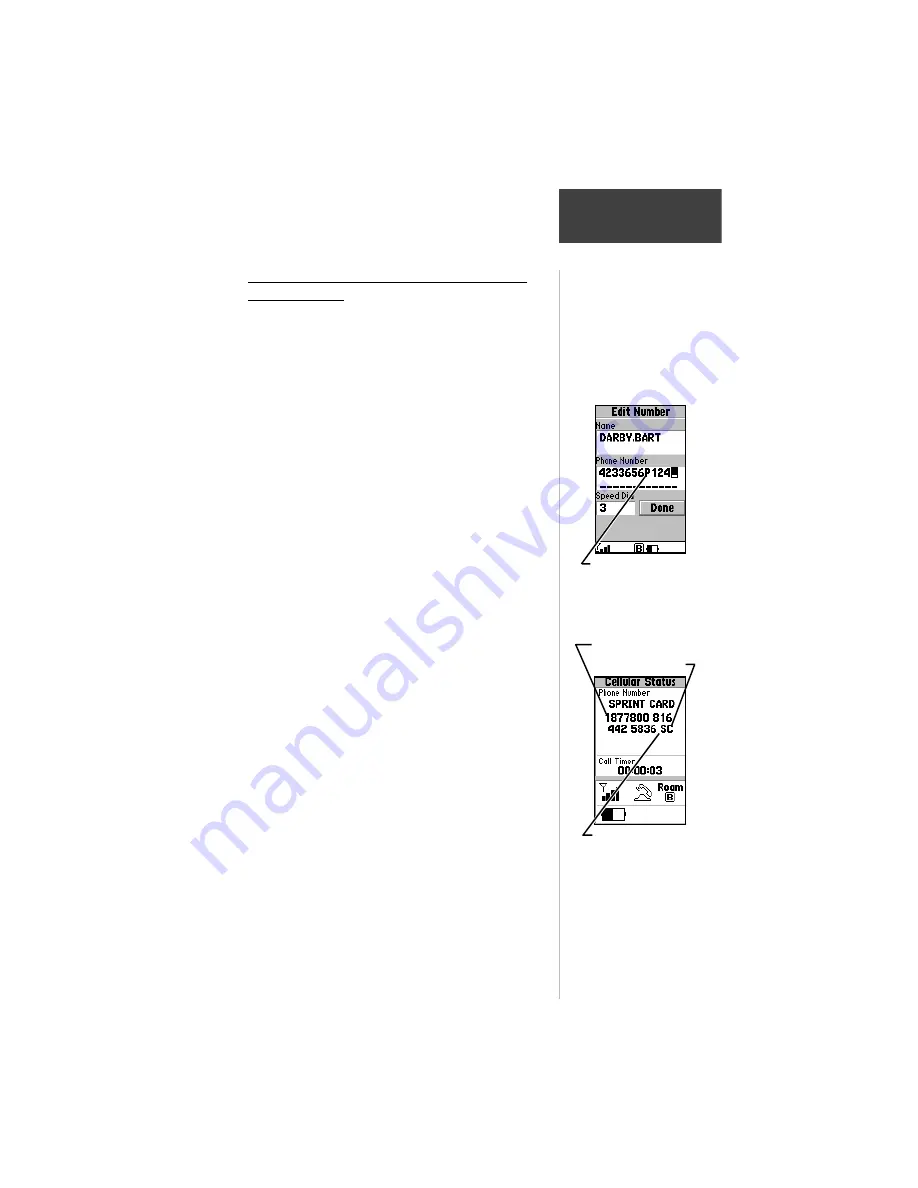
53
Section 4
Cell Phone
Reference
Setting Up Dial String Codes for Automated
Phone Services
You can program the NavTalk Pilot to dial DTMF
Tones for a wide variety of automated phone system
services. You can program calling card PIN’s, link phone
numbers from the PhoneBook Page, pause in a dial string,
stop dialing until you press send again after listening to
prompts at the call destination, and transmit your GPS
position via DTMF tones.
When you add a Dial String Code to a number string
you must use the up or down arrows to enter the code.
These keys display only the code letters and numerals
used to create a dial string with DTMF tones.
To create a DTMF Dialing String:
Dial String codes are used to tell the NavTalk Pilot
how and when to send DTMF tones to a call’s
destination and can allow you access to any service
that employs DTMF tones. To create a dial string for
your DTMF application use the following codes to
create appropriate pauses, stops and links in the
dial string. The chart on the next page lists DTMF
codes and their function.
EXAMPLES OF CODED DIAL STRINGS:
1. Use a
“D”
code before a string of numbers and
they will all be sent as DTMF tones.
Example:
D3124545 = the phone number
2. Use the
“P”
code to create a 5 second pause in a
dial string to allow for recorded messages or other
delays in the dialing sequence.
Example:
7654567PP234 = the phone number, a
10-second pause for the recorded message and
then the extension number.
3. Use the
“L”
code to link a phone number from the
PhoneBook for insertion into the dial string.
Example:
555-1212L. Bob Anderson’s extension
number can be selected from the PhoneBook during
the dial string allowing it to be sent as a DTMF
tone.
Calling Card “C” Code
“S” Code stops dialing
to allow for phone
number entry
Sprint Access Number
A “P” Code entered into
the dial string inserts a 5
second pause before
completing the dial string






























